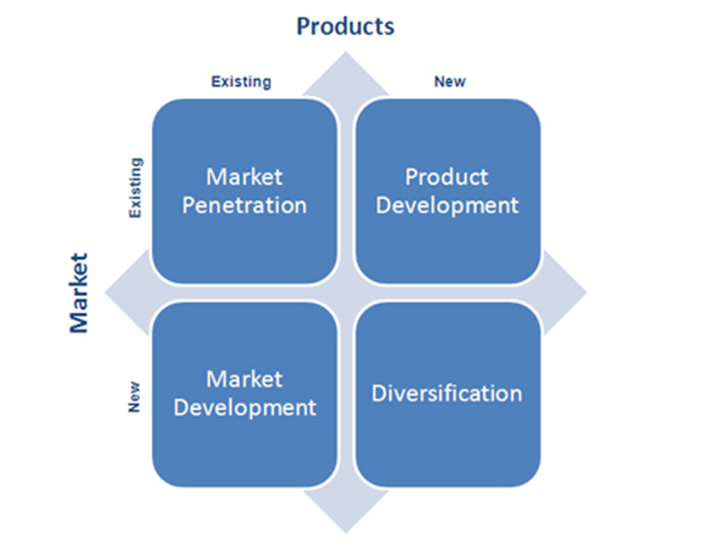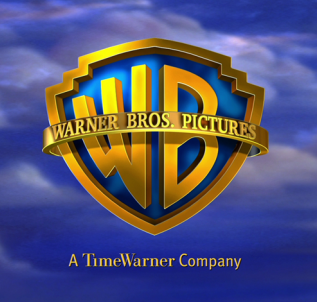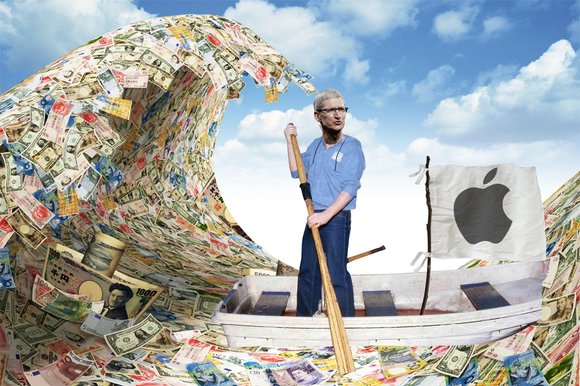
Ansoff Growth matrix assists businesses to increase their revenues by offering four different growth options depending on products and markets. According to the matrix market penetration is a type of growth where the company attempts to increase the level of sales of existing products into current markets. Product development growth strategy, on the other hand, involves introducing new products into current markets. A situation where a business enters new market with its existing products is marked as market development growth strategy. Diversification growth strategy can be achieved through offering new products into new markets. For example, this principle is followed by Warner Bros., although the extent of utilisation of each individual growth strategy varies. Warner Bros. uses market penetration and product development strategies in the US in particular through periodically introducing popular entertainment shows. Due to the following to this strategy for the season of 2012 – 2013, Warner Bros. Television has accounted for more than 30 per cent of top shows on broadcast TV in the US (Annual Report, 2013). Acquisition of 55 per cent of Shed Media plc, one of the leading entertainment firms in the UK for USD 100 million in 2010 (Annual Report, 2013) can be referred in order to illustrate market development strategy of Warner Bros. Diversification strategy, as discussed above is engaged by Warner Bros. in relation to quality of content and the manners of delivery and consumption of films and entertainment products and services. References Annual Report (2013) Time Warner

Porter’s generic strategies are one of the most popular tools used when undertaking a competitive analysis in any industry. According to Porter (1985) companies can generally choose from two broad strategies, product differentiation or cost efficiency in broad market scope, or they may pursue product differentiation or cost efficiency strategies within a particular customer segment. To put it simply, companies usually choose to maximise their profit through offering products or services in lower prices, or offering superior quality products or services for higher price. And this can be done for the whole business or for a particular customer segment. A focus strategy “is defined by its emphasis on a single industry segment within which the orientation may be toward either low cost or differentiation” (Czinkota and Ronkainen, 2007, p.196). When pursuing a cost leadership strategy the company prices its products or services at a lower level than competition. Cost leadership strategy is associated with engagement in economies of scale and maintaining strict control of costs. Differentiation strategy, on the other hand, focuses marketing efforts on quality and uniqueness in relation to specific aspects of products or services. There are many advantages product differentiation strategy provides to the business. Product differentiation strategy increases the level of customer loyalty dramatically by mentioning the statistical data according to which US consumer loyalty to a single brand varies from 30 percent in batteries up to 70 percent in cigarettes. When conducting competitive analysis companies should seek following information: current strategy and future objectives of competitors, assumptions about the industry in which competitors believe, and strengths and weaknesses of competitors. Example: Application of Porter’s Generic Strategies to Warner Bros. According to Porter’s generic strategies differentiation in broad competitive scope marks the main competitive advantage of Warner Bros. The company engages in diversification in two levels:…

Five forces framework introduced by Porter (1980) has been acknowledged as an effective tool used in strategy formulation. Application of the framework is associated with analysis of five separate factors determine the overall level of competitiveness in the industry. Warner Bros. Porter’s Five Forces Analysis can be illustrated in the following manner: Threat of new entrants in film, television, and music entertainment industry has been traditionally moderate due to high levels of cost barriers. However, internet and rapid developments in information technology have increased the threat of new entrants to the industry through providing opportunities to lower cost barriers. Bargaining power of buyers is immense as there are no switching costs for the customers of Warner Bros. Buyer bargaining power is also fuelled by abundance of offers in films and manufacturing industry. Threat of substitute products for products offered by Warner Bros. is significant. Substitutions for Warner Bros. products include a wide range of video games, as well as, increasing popularity of major social networking websites such as Facebook, YouTube and Twitter. Bargaining power of suppliers is greater in films and entertainment industry compared to many other industries. Due to the unique nature of this industry famous actors can be classified as suppliers at the same time as serving as human resources. According to this approach, the success of sequels of famous Warner Bros. franchises such as Lord of the Rings, Batman, Harry Potter and Hangover is possible only through attracting A-list actors and actresses who have great bargaining power. Rivalry among existing competitors in global entertainment industry is intense and major companies competing in the industry along with Warner Bros. include Paramount Pictures Corporation, The Walt Disney Studios, Fox Filmed Industries and others. This portal also contains SWOT and PESTEL analyses for Warner Bros. References Porter, M. (1980) “Competitive…

Warner Bros. is a subsidiary of Time Warner and during the year of 2012 alone the company has produced 18 films in English language internationally and 23 films in local languages around the globe (Annual Report, 2012). The portfolio of Time Warner along with Warner Bros. comprises a set of famous media and entertainment brands such as Time, New Line Cinema, Sports Illustrated, TNT, People, TBS, Cinemax, HBO and CNN. Time Warner has generated the revenues of USD 28.7 billion during 2012, with operating income amounting to USD 5.9 billion (Annual Report, 2012). Warner Bros. represents Film and TV Entertainment segment of Time Warner and during the year of 2012 Warner Bros. has generated USD 12 billion revenues which accounts to 39% of Time Warner total revenues. Warner Bros. vision is associated with ‘sharing stories from the most talented and creative voices in the industry in a consistent manner’. Core mission of Warner Bros. has been specified as ‘creating and distributing great stories to audiences around the globe’. Warner Bros. produces feature films in two formats: on its own and through co-financing arrangements with other companies. “Warner Bros. feature film strategy focuses on offering a diverse slate of feature films with a mix of genres, talent and budgets” (Annual Report, 2012. p.24). In other words, product differentiation strategy is the main business strategy currently pursued by Warner Bros. strategic level management. Attempts to lead technological changes mark another important aspect of Time Warner and Warner Bros. corporate strategy. Specifically, the company is taking digital efforts to the next level according to its principles of Contents Everywhere, and consumers are being provided with access to service thorough increasing numbers of platforms such as mobile devices in innovative manners. Warner Bros. is one of the leading global entertainment companies that has successfully…

PESTEL analysis can be explained as “a checklist to analyse the political, economic, socio-cultural, technological, environmental and legal aspects of the environment” (Rao et al., 2009, p.115). The framework assists with analysis of the impact of each of these individual aspects of external environment to be used in decision-making by senior management. PESTEL analysis for Warner Bros. is illustrated on the following table: Political Political situation in the US and foreign markets Censorship on media and entertainment in emerging markets Impacts of lobbying groups in film and entertainment industry Effects of industry pressure groups Economical Impact of US foreign trade deficit issue Resign costs of advertising Level of US unemployment Inflation rate in the US Changes in the US taxation system Social Value changes in the US and other market Increasing influence of internet on social life Changes in demographic challenges Increasing importance of work-life balance Acceptance of same-sex marriages by increasing numbers of states in the US Technological Increasing popularity of 3D technology Maturation of films in DVD format Emergence of innovative platforms to consume entertainment products Increasing integration of IT in various stages of film production Technological breakthroughs in film production Ecological Problems associated with global warming Rising environmental concern of people globally Increasing importance of eco-tourism and related issues Increasing importance of corporate social responsibility (CSR) Legal Licensing issues with other organisations in the industry Problems related to intellectual property Legal barriers to enter emerging markets Changes in the US rules and regulations in relation to films and entertainment industry. Warner Bros. PESTEL Analysis References Rao, C.A., Rao, B.P. & Rao, K. (2009) “Strategic Management and Business Policy: Text and Cases” Excel Books

Strengths Warner Bros. has a solid financial position with USD 12 billion revenues generated during the year of 2012 alone with more than USD 1.2 billion operating income (Annual Report, 2012). Moreover, Warner Bros. has produced a series of successful franchises such as The Lord of the Rings, Batman, Harry Potter and Hangover that have immense contributions to the level of profitability of the company. Knowledge and experiences associated with the production of these successful franchises can be specified as strengths of Warner Bros. The agreement of Warner Bros. with Netflix Inc. that allows the company to stream previous sessions of shows’ series shown on CW network can be added to the list of its strengths due to the associated potentials for profit maximisation. Weaknesses Overdependence of Warner Bros. on the home market in the US is its major weakness in global competition. US government debt issues and implications of this issue on consumer spending patterns in the future increases the level of urgency of this weakness on long-term perspectives. Moreover, recent damage to Warner Bros. brand image for being used for infringing Cat Meme Copyright can be listed as weakness for the company that has to be addressed by senior level management. Opportunities There is an attractive profit maximisation opportunity for Warner Bros. through introducing new instalments to its successful franchises such as The Lord of the Rings, Batman, Harry Potter and Hangover. Expansion of digital distribution capabilities represents opportunity for Warner Bros. to strengthen its role as a leader of technological changes in the industry. Moreover, the levels of Warner Bros. revenues can be further increased through higher integration of product placement marketing strategy. Threats Business threats faced by Warner Bros. are diverse and they primarily include further decline of the sales of DVDs due…

Differences in Aims and Objectives in their Implications on Leadership Practices Differences in organisational aims and objectives have been found to be a significant difference between private and public sector organisations. This difference has implications on leadership practices in public and private sector organisations. In other words, usually there are clear performance indicators to assess the performances of organisational leaders in private sector and these indicators include company share prices, market share, and the levels of revenues. In cases of public sector organisations, on the other hand, performance indicators are vague, because organisational aim and objectives usually involve qualitative rather than quantitative elements. From this perspective, while the level of effectiveness of organisational leaders can be determined within a year or even shorter period of time on the basis of several quarterly performance of the organisation, longer period of time may be necessary to establish the level of effectiveness of leaders in public sector. Differences in Organisational Stakeholder Expectations and their Implications on Leadership Practices The variety and role of organisational stakeholders have been found as another point of a vast difference between private and public sector organisations. Establishing strategic relationships with stakeholders and meeting their expectations at a reasonable extent in private sector necessitates organisational leaders to adopt various roles simultaneously. In order to be successful, private sector organisational leaders need to be perceived as socially responsible by general public, they need to be perceived as dynamic and cost saving by shareholders, and at the same time organisational leaders need to be perceived as caring and motivational by the workforce. Arguably, meeting stakeholder expectations in public sector is less contradicted compared to meeting stakeholder expectations in private sector from leadership viewpoint. This is because in most cases no stakeholder group expects profit maximisation from public sector organisations, and…

Attendance of the module and completion of the report has deepened the level of my knowledge in a number of areas. First of all, I learned about the importance of branding from practical and theoretical viewpoints. Moreover, I learned about the potential contribution of effective product design and innovation in products design and its key features in successful branding. During the research process for the report I gained an in-depth knowledge about all stages of the designing process of products and services. I feel very optimistic about applicability of this knowledge in practice in the future as a manager. My knowledge has also increased in the areas of patenting, trademarks and protection of intellectual property. Studying a set of case studies from IMSS has helped me to learn about the types current global trends and assess their implications on businesses within the settings of real life business situations. The module and assessment gave me some ideas about innovation and design. Before attending the module and completing the assessment I thought of design as a static issue and did not duly understand its highly dynamic character. However, thanks to effective teaching method of the tutor, adequate materials and individual learning efforts, now I do understand that product design needs to be perceived as an integral component of new product development efforts and design needs to be based on appropriate integration of simplicity and convenience. Moreover, central idea of the module has been associated with innovation in product design and functionality as a source of competitive advantage and I have obtained an in-depth knowledge about the value of innovation in product design and functionality to be used in the future during my career. The role of branding and effective marketing communication is another area of knowledge that I have gained through attending…

The term luxury has been defined as “something inessential but conductive to pleasure and comfort” (The Free Dictionary, 2014) and “great comfort, especially as provided by expensive and beautiful things” (Cambridge Dictionaries, 2014). Accordingly, luxury industry can be defined as an industry where consumer perceived value about products and services plays greater role and the actual benefits offered by those products and services. Moreover, luxury industry is closely associated with intangible aspects of products and services. In order to establish our luxury clothing brand, we have to make sure that there is a growing marketplace and ever growing demand for luxury clothes in the countries we wish to have our presence. According to market research analysis, there is a growing demand for luxury clothes both in the UK and worldwide. Although there is a common consensus that luxury brands suffered significant losses during and after recession, the market data discovered in this business plan proves the opposite. The Figure 1 shows that demand and growth of the marketplace for luxury clothes have been consistently rising for the last 5-6 years. Although there is a slight shift of growth for luxury marketplace to the emerging markets such as China, overall snapshot for the luxury clothes worldwide tends to be growing at significantly fast rate of around 7-8% for the next few years. The most obvious of these reasons is that there have been more people who have a large amount of disposable income from whom we have seen an increased desire for luxury goods. Brands that manufacture luxury goods have noticed this increase in demand, and have responded by tailoring their particular strategies to making sure that this demand is met in more areas of the world by opening stores in major cities that are entirely dedicated to the sale of…
By Helena Mullock
Category: Industry Analysis

Business turnaround can be defined as financial recovery of the company after the period of poor performance. The financial recovery can be achieved through implementing a specific set of strategies by the senior level management. The most popular turnaround strategies include the following: Re-building around a profitable core business Re-branding Changing organisational culture. New product development Cost reduction through human resources downsizing and other measures The choice of turnaround strategies listed above by a company depends on a wide range of factors such as situation in the marketplace, availability of resources, the present pattern of organisational culture and others. Apple’s primary turnaround strategy relates to rebuilding around a profitable core business. Manufacturing of IPhone and IPad have proved to be highly profitable core business for Apple and the management is further increasing its focus on these core businesses through the introduction of IPad Mini, development of lower cost Iphones for emerging markets such as India and China, and committing to investment for further developments of IOS platform. Changing organisational culture can be specified as another turnaround strategy currently in use by Apple CEO Tim Cook. Under former CEO Steve Jobs, Apple organisational culture was famous for being overly harsh, competitive and even exploitative of employees. However, having a reputation for being a ‘nice guy’, Tim Cook is believed to be leading a ‘quiet cultural revolution’ to foster more communication between various levels of management and to make Apple nicer workplace in general. Specifically, the micro-management practice of former CEO Steve Jobs has been abandoned and the level of involvement of employees in strategic decision making has been increased. Moreover, new product development has been employed by Apple CEO as additional turnaround strategy. Apple is believed to be developing watches and television that might have the same impact on respective products…
